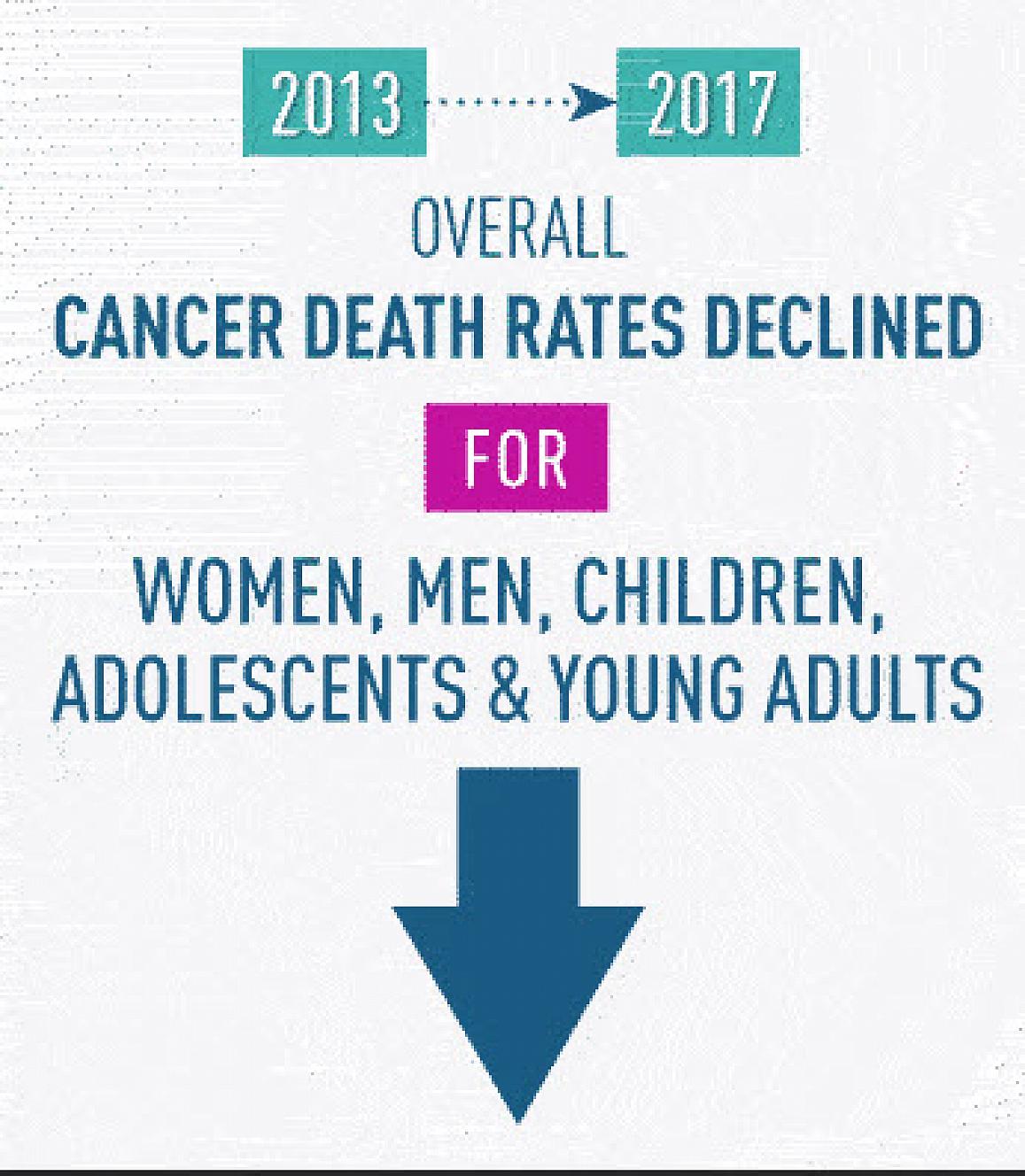
The Annual Report to the Nation on the Status of Cancer finds that cancer death rates continued to decline from 2001 to 2017 in the United States for all cancer sites combined.
The report is published in the journal Cancer.
These decreases were seen in all major racial and ethnic groups and among men, women, adolescents, young adults, and children. Rates of new cancers (cancer incidence) for all cancers combined leveled off among men and increased slightly for women during 2012 to 2016.
In a companion paper to the report, researchers looked at progress toward Healthy People 2020 objectives for four common cancers: lung, prostate, female breast, and colorectal.
The annual report is a collaborative effort among the Centers for Disease Control and Prevention (CDC); the National Cancer Institute (NCI, part of the National Institutes of Health); the American Cancer Society (ACS); and the North American Association of Central Cancer Registries (NAACCR).
This year’s report showed that overall cancer death rates decreased 1.5% on average per year from 2001 to 2017, decreasing more rapidly among men (by 1.8% per year) than among women (1.4% per year). The report found that overall cancer death rates decreased in every racial and ethnic group during 2013–2017.
“The United States continues to make significant progress in cancer prevention, early detection, and treatment,” said CDC Director Robert R. Redfield, M.D. “While we are encouraged that overall cancer death rates have decreased, there is still much more we can do to prevent new cancers and support communities, families, and cancer survivors in this ongoing battle.”
National Status of Cancer Report Findings
The data analyzed in the report combines cancer incidence data collected by CDC’s National Program of Cancer Registries (NPCR) and NCI’s Surveillance, Epidemiology, and End Results (SEER) Program, as well as mortality data from CDC’s National Center for Health Statistics.
The report found that from 2013 to 2017:
- Among men, death rates decreased for 11 of the 19 most common cancers, were stable for four cancers (including prostate), and increased for four cancers (oral cavity and pharynx, soft tissue including heart, brain and other nervous system, and pancreas).
- Among women, death rates decreased for 14 of the 20 most common cancers, including the three most common cancers (lung and bronchus, breast, and colorectal), but increased for cancers of the uterus, liver, brain and other nervous system, soft tissue including heart, and pancreas. Rates were stable for oral cavity and pharynx cancer.
- Overall cancer death rates among children ages 0 to 14 years decreased an average of 1.4% per year. Among adolescents and young adults ages 15 to 39 years, overall cancer death rates decreased an average of 1.0% per year.
- Melanoma death rates decreased 6.1% per year among men and 6.3% per year among women.
- Lung cancer death rates decreased 4.8% per year among men and 3.7% per year among women. However, lung cancer continues to be the leading cause of cancer death, accounting for about one-fourth of all cancer deaths.
“The drops in mortality we’re seeing are real, sustained, and a strong indication of what we can do when we work to prevent and treat cancer,” said William G. Cance, M.D., ACS Chief Medical and Scientific Officer. “But we can and must do more, particularly to ensure everyone in the United States has access to the resources that are all too often benefitting only the most fortunate.”
For cancer incidence, notable findings include that from 2012 to 2016, incidence rates for all cancers combined were stable in men and increased slightly in women. In addition, rates of new cancers were stable among white men and decreased among black, Asian/Pacific Islander (API), American Indian/Alaska Native (AI/AN), and Hispanic men.
“Thanks to advances brought about by basic research, we are making remarkable progress against cancer,” said NCI Director Norman E. “Ned” Sharpless, M.D. “This report provides further evidence that cancer death rates continue to decline. But we must not be complacent. The cancer incidence data—especially the increase in cancer among women—is a clear reminder that there is more work ahead.”
For the first time, the report provided rates and trends for the most common cancers among children (younger than 15 years) and among adolescents and young adults ages 15–39 years. Among children, overall cancer incidence rates increased an average of 0.8% per year during 2012 to 2016. The most common cancer types among children were leukemia, brain and other nervous system cancers, and lymphoma, with increasing incidence trends for each of these cancers during 2012 to 2016.
Among adolescents and young adults, overall cancer incidence rates increased an average of 0.9% per year from 2012 to 2016. The most common cancer among adolescents and young adults was female breast cancer; rates were highest among young black women.
“We look forward to improving surveillance of childhood cancers in the future by establishing specific databases for children to study these rare cancers. There are many unanswered questions in the realm of pediatric cancer and improving our tools to study them is essential to their ultimate prevention,” said NAACCR Director Betsy Kohler.
